On Sunday February 7th, 2021, a 43-year-old American who claims ancestral roots in Co Cavan forced tens of millions of people to recalibrate their perceptions of the limitations of age.
Technically, Tom Brady is middle-aged and therefore entering that uncertain terrain featuring intimations of mortality, an inexplicable enthusiasm for DIY and a quiet conviction that there will never be a TV show better than The Fall Guy.
Any time Brady runs in public (surprisingly rarely) it is with the slightly knock-kneed, loping and fascinatingly slow stride of an athlete who was never quick to begin with. But he is a one-man Super Bowl machine, lording over competitors in the most violent field sport on Earth, making a mockery of the fading athletic ambitions of fortysomethings across the world.
How on earth does he do this? Through pliability exercise, hydration and avoiding nightshade foods, according to his own carefully curated lifestyle branding – which can be tailored to your needs for a modest financial outlay. But that doesn’t explain it. The brutality of American football has left several generations of NFL players with brain injury and many more hobbled and hurt. But Brady continues to glide serenely above the fray.
Cut adrift by the New England Patriots, who didn’t want to saddle a maximum contract to a body which was bound to break down, Brady returned to his factory setting, when he was the 199th and last pick in the 2000 NFL draft. Once again, he could prove the world wrong. He was no longer the figurehead of the Patriots, viewed by some as the evil empire of American sports, but the outsider who had fallen in with a travelling circus.
Within weeks of quitting the Patriots, Brady had moved to the Tampa Bay Buccaneers, a resort-city franchise with an amicable, harmless football team. And he transformed the entire business with an electrifying suddenness. He did all of this without ever once losing the impenetrable smile – as bright and cold as winter sun – which has become the most recognisable in American life.
Preternatural aura
But how could he keep going? Investigations into the preternatural aura of good health which Brady radiates have thrown no real light on the mystery. In the Camelot era of American politics, the Kennedy siblings engaged in touch football games to sell the idea of youthfulness and vitality. Here was another big-toothed, smiley American with a vague loyalty to the Auld Sod doing it for real.
The Brady Effect was the great distraction in the early weeks of the year, with the nights dark and bitter and the Covid-19 pandemic laying siege on societies across the world. A few hours before Brady played in that Super Bowl, Liverpool hosted Manchester City at Anfield. It finished 4-1 to the visitors. The anguish was writ large on the face of Liverpool’s Jürgen Klopp – a cartoonist’s dream at the best of times. If Klopp ever heard Alex Ferguson’s admission that, after a 5-1 thrashing by City, he went home and put his head under the pillow, he would have known the feeling.
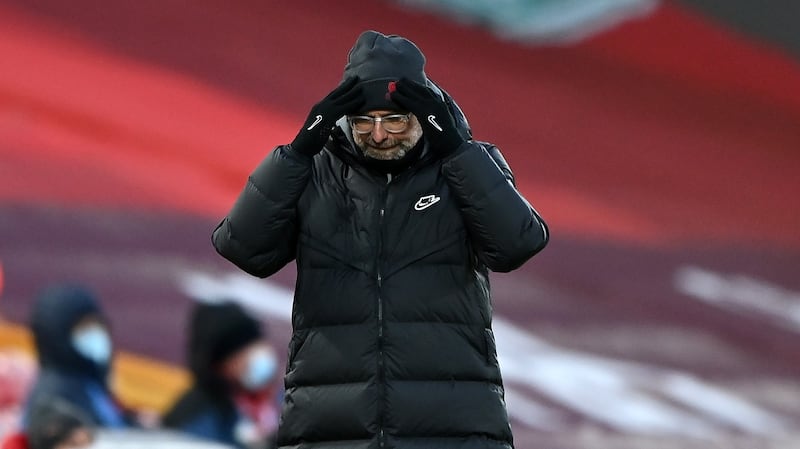
Klopp is already an exalted figure on Merseyside: he has lifted the three-decades-long hex. But the pressure, the job, the adrenaline never leaves. It’s a fix and a rush. Although the signs were ominous that day, nobody predicted that Liverpool had already started a historic losing streak, with six home defeats for the first time since the 1954 season. Columnists and podcasters and television studio pundits all placed Klopp on the psychoanalyst’s couch to try to figure out what had gone wrong and why the German and his team had lost “it”.
The only salvation for Klopp was that that loss against City was played out in front of nobody. Anfield was empty, the Kop End bandaged in vast banners to take the desolate look off the place. The voices and shouts of the players carried around the empty stadium. By then, football fans around the world had grown accustomed to the absence of the teeming, seething background of people, with the chants, the expressions of ecstasy and rage and – most of the time – anxiety.
Empty stands
Football fans learned to adapt: to block out the empty stands on their screens and ignore the eerie silence and tap into the football on the pitch. Once the crowds returned with the new season in August, we could begin to acknowledge to ourselves how miserable it had been, how forced and false and hollow the best of sport is without the sense of audience participation.
That single day contained the furnace of elite sport as global entertainment. The NFL is the most lucrative sports league in the world, generating $16 billion (€14.2 billion) annually, twice as much as the NBA commands and still light years ahead of the Premier League, which is worth $5.3 billion per season. But the Premier League is the most watched sports entertainment in the world. Both of these games – the season finale in gridiron, the meeting of the league-winning clubs of the last two seasons – were vital entertainments across all continents in the space of a few hours. The locality – the paltry afternoon light of Lancashire, the sultriness of Tampa – are just details. Fandom has never been so fluid or free of borders.

February was hardly a banner month in a calendar year that would host the European Football Championship and the delayed Tokyo Olympics. Nonetheless, it contained all kinds of echoes of the past and future of the sport. Two weeks after Brady's latest show of escapology, Tiger Woods lost control of his car on a notorious stretch of road along Rancho Palos Verdes in Los Angeles.
Initial patchy reports on social media soon became an engulfing, rolling news feed. It was partly an update on the golfer’s injuries – severe and career-threatening – and also an excuse to revisit in detail one of the most turbulent lives in contemporary America, a three-decade real-time extravaganza during which Woods moved from extreme control to unprecedented chaos into a kind of late-blooming redemption.
Titanium sheen
Woods’s absorption in his sport and the longevity of his success has been even more defiant than that of Brady, who has perfected a titanium sheen of perfection, aesthetic beauty and remoteness. Woods relinquished all of that in a fireball of personal mishaps and decisions for which he was purged. A litany of back surgeries saw him fall to 899th in the world in 2017 before he re-emerged two years later as indomitable Masters champions and a slightly warmer and more relatable version of the man who once more had golf in the palm of his hands.
And just like Michael Jordan in the epic The Last Dance, a 10-hour extravaganza normally reserved for events such as the US civil war or Vietnam, the life of Tiger Woods was now ripe for an intense, prolonged study. Tiger, the HBO three-hour documentary, originally aired on January 10th and 17th to mixed reviews.
Woods's was a life pre-ordained by the determination of his late father Earl to produce a golfer that would change the game. Much was made of the colour of Woods's skin during his phenomenal rising streak but the man himself remained steadfastly detached and distanced from the subject of race even as he transformed the sport. But the rarest insight was provided by Dina Gravell, Woods's girlfriend in high school, who handed over a video cassette to the documentary-makers. It contained gold: film of the teenage Woods, still unknown and carefree in the moment, playing air-saxophone and blissfully happy in nerd-land.
For all of the thousands of hours of film of Woods as golf’s phenomenon, here he is as a glimpse of the shark as ordinary doofus, of the life unlived. Later in the film, a friend of Woods remembered him explaining why scuba diving appealed so much to him. “He said to me, ‘The fishies don’t know who I am down there.’ I thought there was so much truth in that statement, so much sadness in that statement.”
Deep strangeness
Woods’s story spoke of the deep strangeness of life for all of these people – Brady and Klopp and Woods – who find themselves elevated to the small space where everybody knows who they are. The Woods documentary was still fresh in the minds of the millions of viewers when he crashed his car just a month later, leaving the film already out of date and struggling to keep pace with events. Already, Woods was in an entirely different and unexpected place, his legs badly damaged, his golf career probably over, lucky to be alive.
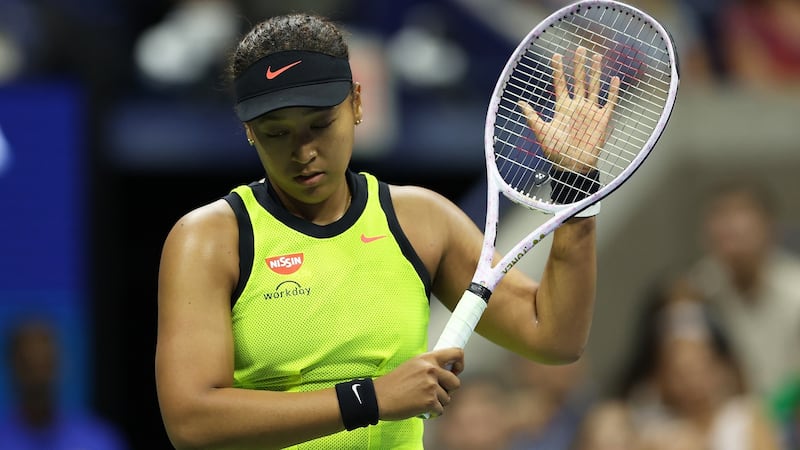
And in February, in Australia, Naomi Osaka and Novak Djokovic won the women's and men's Australian Open single tennis championships. Djokovic, another single-sport phenomenon rampaging through the age barrier, cast himself as a divisive figure with an unapologetic stance against mandatory vaccines. He now seems set to "skip" the Melbourne tournament next year rather than oblige the hosts' vaccine protocol.
But the tennis year belonged to Osaka for reasons that had little to do with the game. In May, Osaka released a statement indicating her intention to skip media conferences at the French Open to safeguard her mental health. Roland Garros organisers were piqued and threatened a fine and expulsion. Osaka withdrew, explaining that she had no wish to be a distraction and that as a natural introvert, she suffered from "huge waves of anxiety" when faced with media obligations. The incident generated an instant fireball of opinion. Michelle Obama was among those who praised Osaka's courage while Piers Morgan laced up the 12-hole boots to deliver another kicking from the pulpit.
What was happening here? The French Open is a big tennis tournament but it’s hardly a mass-entertainment moment. Djokovic, quizzed about the decision (at a press conference, naturally), looked puzzled, allowed that those post-match interviews could be “unpleasant”, but said attendance was part of the rules, part of the deal. You got on with it.
Overheated
In the overheated and over-stimulated world, it was hard to evaluate how significant the moment was. Did the public, caught in a pandemic, really have time to care about whether or not a tennis star showed up for press conferences? Was the media elevating a media bubble story into a production of widely spread and exceptionally shallow headlines? Osaka left Paris. She missed Wimbledon, too. In the autumn came the Tokyo Olympics, and her defeat to Markéta Vondrousová in the third round seemed to confirm Japanese fears that these Olympics were ill-fated.
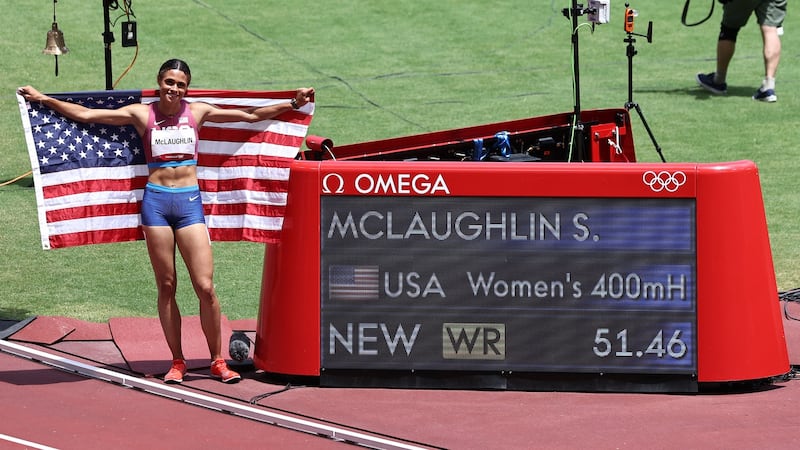
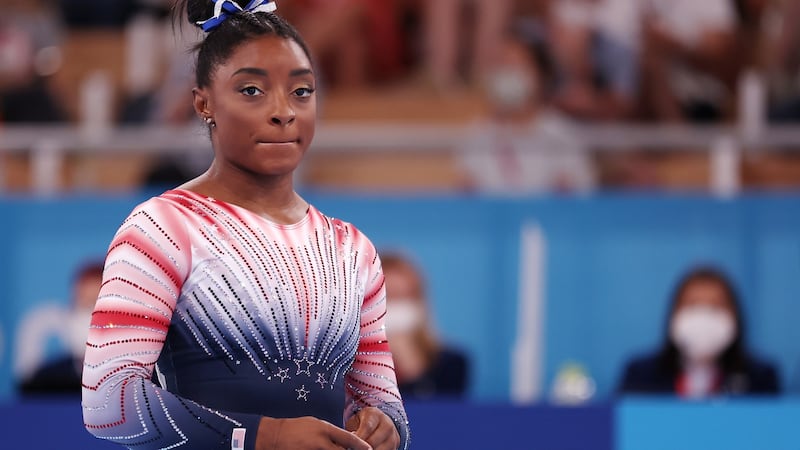
The build-up to the Olympics was uneasy and ambivalent. They went ahead against the wishes of many of the host country's citizens. They were partially rescued by a series of stunning athletic feats. Once again, the pandemic denied the fans the opportunity to watch sports history forming before their eyes. Tokyo was the fast games, with world records tumbling in the swimming pool and on the track. The 400m hurdles records were eclipsed on successive days, with Norway's Karsten Warholm taking gold in the men's on Monday August 2nd, and Sydney McLaughlin of the USA besting her own world record on a time of 51.46 the next day.
But what made the world take note was a gold medal not won. The US gymnast Simone Biles arrived in Tokyo on the threshold of all kinds of personal and general records. She withdrew from the team finals, literally walking out of the auditorium. In the end, she did not compete in six of seven finals, explaining that she was suffering from the "twisties", a spatial awareness deficit which made it dangerous for her to perform.
Later, she'd declare that she should never have been at the Olympics: that the fallout from the Larry Nassar sexual abuse scandal had had a profound impact on her. She didn't want to be there. Nor did she want the monstrousness of a trusted coaching staff figure to rob her from a lifetime of hard work. In short, she couldn't go on. Once again, on the biggest sports stage of them all, another feted, invincible and indomitable star had either chosen or had no choice but to remove the armour.
Torrent of emotions
Biles gave the world a glimpse into the draining, complex, relentless torrent of emotions that must be pacified in order for her to thrill and entertain the public as she has done since childhood. When she appeared on television after the Tokyo games, Biles sounded lighter and pacified. The missed medals didn’t matter. She wasn’t ruling out an appearance at the Paris Olympics. Osaka, meanwhile, dropped out of the top 10 in the world tennis rankings. The game didn’t seem so important anymore.
The pandemic has sparked all kinds of reassessments of priorities and examinations of how we live our lives. Office life has been abandoned, whether temporarily or forever. Millions of people have been recast in Edward Hopper stills, caught in the spectral laptop light at kitchen tables doubling as office desks. Sport has continued as a vital distraction at both the international and national level. But rumbling through the year was the background noise of those very brightest stars trying to reclaim some essence of themselves and to perhaps question whether the trade of global fame and mega-wealth for privacy and the basic right to be ordinary – vulnerable, tired, afraid – was worth it.
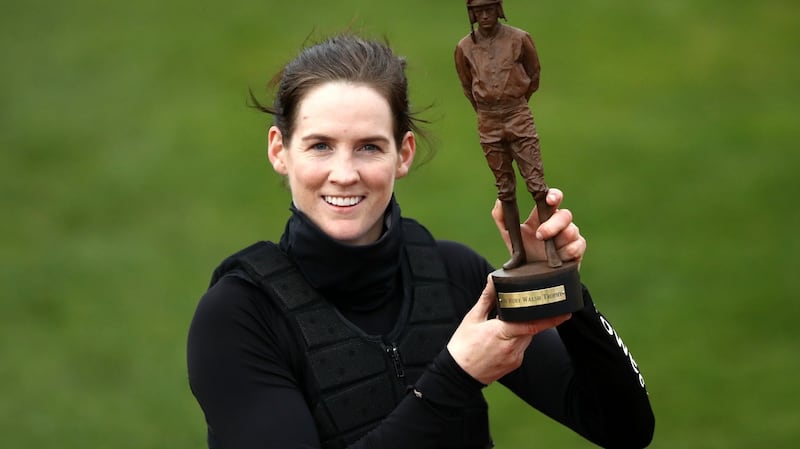
The standards rush skywards. Rachael Blackmore initiated at Cheltenham what has felt like a year when Irish sportswomen broke through a glass ceiling and pushed society into genuinely forgetting the gender divide in sport.
After closing the year with another win, Ireland's Katie Taylor seems set for a seven-figure payday with a hugely anticipated fight against Amanda Serrano. Tyrone came storming out of nowhere to complete their fourth All-Ireland football title while the Meath footballers, in winning the women's All-Ireland, gave the Gaelic football performance of the year.
Through all those moments and more, people have thanked the heavens for the escape of sport. As the year drew to a close, there was a sharp international response to the fate of Peng Shuai, the Chinese tennis star who delivered, on social media, grave charges of sexual assault against one of her country’s most senior political figures. Silence was followed by a series of stage-managed appearances and the decision by the Women’s Tennis Association to pull out of China. What started as a social media post has escalated into a diplomatic situation which might just overshadow the Beijing Winter Olympics.
A leading star in sport, after speaking out, has been coerced or persuaded into silence followed by orchestrated equivocations. It flies in the face of a year when many of the stars of sport have felt themselves heard for the first time. As the world hurtles uneasily into 2022, the calls for Peng Shuai to be liberated to speak freely and without fear of retribution will grow louder before the Winter Games get under way in February.
By then, Tom Brady may well be master of his own universe again and so the wheels go round and round.





















